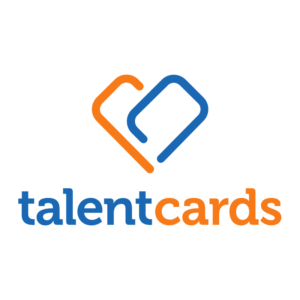How Microlearning And Spaced Repetition Lead To Longer-Lasting Learning
On average, people forget 50% of new information within the first hour that passes and 70% within 24 hours [1]. Now consider that, in a digital world, employees are exposed to new information on TVs, phones, and computers multiple times throughout the day.
This makes training content a shrinking proportion of daily learning. Which also means that the likelihood of employees forgetting what they’ve learned in training, and forgetting it quickly, is high. This is the opposite of what training sets out to achieve, which is a long-term behavior change.
As it turns out, though, microlearning and spaced repetition can put training content in the percentage of new information that employees actually remember. Let’s explore how and why a spaced learning approach is effective, starting with the definition of the forgetting curve.
What Is The Forgetting Curve?
The Forgetting Curve (identified by German psychologist Dr. Hermann Ebbinghaus and supported by neuroscientists [2]) is the theory that we forget 90% of anything new we learn within just 1 month.
Essentially, Ebbinghaus found a negative relationship between time and memory. In other words, the more time passes, the more likely we are to forget information we haven’t used or recalled.
This creates a problem for companies who invest heaps of time, money and careful planning into training. Which is why spaced repetition has started to receive a lot of love from training managers.
The Role Of Spaced Repetition In Learning Retention
Spaced repetition is best explained with simple examples, such as taking care of a plant. Don’t water your plant regularly enough, and it will die. Give your plant too much water at once and, again, it will die. But water your plant regularly, with just the right amount of water, and it will grow strong roots and thrive.
Similarly, spaced education exercises the brain, by teaching and testing the same information more than once over an extended period of time. This is achieved with activities like quizzes, application questions, and case studies. The more often the brain is exercised on a particular concept, the longer information about that concept is retained for.
As an employee's memory gets stronger, intervals between repetition and recall can also get longer. Eventually, that information will become part of their long-term memory. In essence, then, spaced learning is the secret to bypassing the forgetting curve.
Now, this sounds great. But you might be wondering how to use spaced repetition in training. The answer lies in microlearning content.
Why Spaced Repetition And Microlearning Are Two Peas In A Pod
Some of the best news you’ll hear today is that microlearning platforms, like TalentCards, actually have spaced repetition built into them. This means that, for your staff, improving retention of information over time is as simple as engaging with the company’s training technology.
But why are spaced repetition and microlearning so entwined? Because microlearning provides information in regular bite-sized lessons that are easy to digest and recall. These lessons can be presented as infographics, 2-minute videos or automated 10-question quizzes, all of which are accessible when employees need them the most.
For example, an insurance rep who has just received training on a new suite of products can access microlearning lessons about those products when they meet with a client or when they compile policy documents. Every time they relearn and recall that information, their likelihood of remembering it increases.
And as we mentioned earlier, our brains have a strict ‘use it or lose it’ policy. So, by learning and recalling the same information in different ways, and over a period of time, employees are telling their brains that this information is being used. That it’s important, and not to be forgotten.
But apart from repetition, microlearning also has the added benefit of being quick and convenient. For modern learners, who often have short attention spans and many sources of distraction, microlearning is quick enough for them to give each lesson their full attention. This improves their ability to recall that information at a later stage, too.
But the effectiveness of microlearning as a tool for information retention depends on a few factors. Like the complexity of information, and psychological factors like energy and sleep levels. These factors might be tricky to control, but what you can control is the quality of the microlearning platform that you use for training.
By choosing a powerful platform that helps employees to conquer the Forgetting Curve, and remembering what they’ve learned in training, microlearning could save resources for your L&D department, too. After all, you wouldn’t want to be like the average company that spends $17 million on training every year [3], only for their staff to forget 90% of what they’ve learned. Right?
Conclusion
In today’s fast-paced and fiercely competitive business environment, it’s more important than ever for staff to learn the latest skills and knowledge to stay ahead. But what is it all for if employees forget what they’ve learned before they’ve had time to adapt their behavior on the job?
This is why you need to embrace learning through repetition theory, an approach easily implemented with a microlearning platform. So start practicing microlearning and spaced repetition today, and see your training have a lasting business impact.
References:
[1] Play it Again: The Master Psychopharmacology Program as an Example of Interval Learning in Bite-Sized Portions (https://www.researchgate.net/publication/249008560_416-MPP_PlayItAgain)
[2] Replication and Analysis of Ebbinghaus’ Forgetting Curve
[3] 2017 Training Industry Report (https://trainingmag.com/trgmag-article/2017-training-industry-report/)


